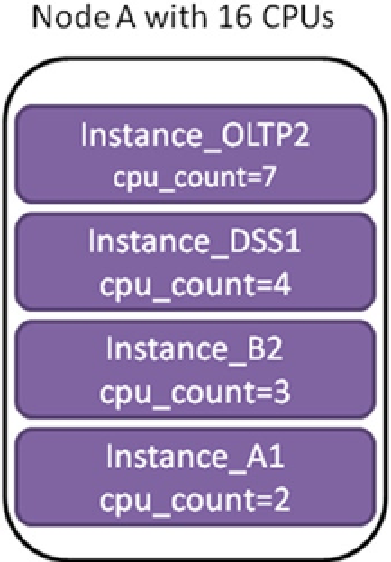Database Reference
In-Depth Information
power. If the database is a policy-managed database and tends to swing between nodes, you need to carefully plan the
cpu_count
value considering the resource availability on those nodes mentioned in the server pool.
The second SQL statement enables the resource manager facility and activates either the
default plan
or a user
defined resource plan. An additional background process,
Virtual Scheduler for resource manager (VKRM)
,
will be started upon enabling resource manager. To verify whether the
CPU caging
is enabled on an instance, use the
following examples:
SQL> show parameter cpu_count
SQL> SELECT instance_caging FROM v$rsrc_plan WHERE is_top_plan = 'TRUE';
When instance caging is configured and enabled, it will restrict the CPU usage for the individual instances and
will not cause excessive CPU usage.
After enabling the feature, the CPU usage can be monitored by querying the
gv$rsrc_consumer_group and
gv$rsrcmgrmetric_history
dynamic views. The views will provide useful inputs about the instance caging usage.
It provides in minute detail the CPU consumption and throttling feedback for the past hour.
To disable instance caging, you simply need to reset the
cpu_count
parameter to 0 on the instance.
■
cpu_count
and
resource_manager_plan
are dynamic initialization parameters, which can be altered without
having instance downtime. individual instances within a raC database can have different
cpu_count
values. however,
frequent modification of the
cpu_count
parameter is not recommended.
Note
Figure
7-8
shows how to partition a 16-CPU/core box (node) using instance caging to limit different instances on
the node to a specific amount of CPU usage.
Figure 7-8.
Example instance caging a 16-CPU/core box for consolidated RAC databases


